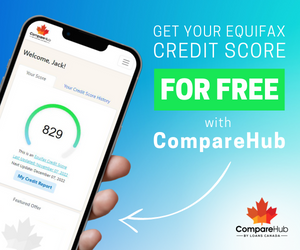Navigating Peer-to-Peer Lending: The Future of Personal Loans in Canada 2024
As the financial landscape evolves, peer-to-peer (P2P) lending emerges as a revolutionary force, offering Canadians a refreshing alternative to traditional personal loans. If you've ever found yourself searching for the best personal loans in Canada, it's time to broaden your horizons and explore P2P lending—where innovation meets opportunity.
What is Peer-to-Peer Lending?
Peer-to-peer lending is a model where individuals can borrow money directly from other individuals, bypassing conventional financial institutions. This system connects borrowers with potential investors through online platforms, creating a seamless and efficient lending process. In a world where community-driven solutions are gaining traction, P2P lending stands as a testament to the power of technology in democratizing finance.
Why Consider Peer-to-Peer Lending?
- Competitive Interest Rates: With traditional loans, banks often have high overhead costs, which can translate into higher interest rates for borrowers. P2P platforms can offer more competitive rates as they operate with lower costs.
- Flexible Terms: P2P lending provides borrowers with the flexibility to negotiate loan terms that suit their specific financial situations. Whether you need a short-term loan or a more extended repayment period, P2P lenders can accommodate your needs.
- Accessibility: For individuals with a less-than-perfect credit history, P2P lending can be a more accessible option. Many platforms evaluate borrowers based on a range of factors beyond just credit scores.
Key Players in Canada’s P2P Lending Space
- Lending Loop: Known for supporting small-to-medium-sized businesses, Lending Loop connects Canadian entrepreneurs with investors eager to fund growth initiatives.
- GoPeer: This platform focuses on personal loans, providing borrowers with a straightforward application process and competitive interest rates.
- FundThrough: Primarily serving businesses, FundThrough offers invoice financing through a P2P model, helping companies maintain cash flow and cover operational expenses.
Understanding the P2P Lending Process
Embarking on a P2P lending journey begins with selecting the right platform. Each platform has its unique offering, and understanding their nuances can help secure the best deal. Here's a step-by-step guide to the typical P2P lending process:
- Profile Creation: Borrowers start by creating a profile on a chosen P2P platform, providing personal and financial information. This step is crucial, as it forms the basis for potential investors to assess your credibility.
- Loan Listing: After profile creation, borrowers list their loan requirements, specifying the amount needed and the intended use. Transparency is key, as investors need to understand the purpose of the loan.
- Funding: Once the loan is listed, investors review and decide whether to fund a portion or the entire amount. The funding process can vary, with some loans being funded in a matter of hours, while others might take longer.
- Repayment: Post-funding, borrowers are expected to repay the loan according to the agreed terms. Platforms usually facilitate this process through automatic deductions, ensuring a seamless repayment experience.
The Role of Credit Scores in P2P Lending
While P2P lending provides an alternative to traditional loans, credit scores still play a significant role. Here's how:
- Interest Rates: A higher credit score often results in lower interest rates, as it signals a lower risk to investors. Conversely, a lower score might lead to higher rates, reflecting increased risk.
- Loan Approval: While P2P platforms consider various factors beyond credit scores, maintaining a good score enhances your chances of approval.
Tips for Successful P2P Borrowing
To thrive in the P2P lending space, consider these strategies:
- Improve Your Credit Score: Simple actions like paying bills on time and reducing outstanding debts can significantly enhance your credit profile.
- Be Transparent: Clearly outline your financial needs and plans for the loan. Transparency builds trust with potential lenders.
- Avoid Scams: As with any financial endeavor, exercise caution. Be wary of platforms promising guaranteed approval with no background checks.
FAQs on Peer-to-Peer Lending
Q1: Can I get a P2P loan without a credit check? A1: Most P2P platforms conduct some form of credit assessment, but they often consider additional factors beyond just your credit score.
Q2: What documentation is required? A2: Typically, you'll need to provide personal identification, income proof, and possibly bank statements to verify your financial standing.
Q3: How can I improve my chances of loan approval? A3: Strengthen your application by maintaining a solid credit score, offering collateral, or even having a co-signer to bolster your credibility.
Q4: Are all P2P platforms trustworthy? A4: While many reputable platforms exist, it's crucial to do your research and choose one with a proven track record and positive reviews.
Conclusion
Peer-to-peer lending is transforming the landscape of personal finance in Canada, offering a promising alternative to traditional personal loans. By understanding the nuances of P2P lending, Canadians can take control of their financial future, securing loans on favorable terms and building community connections. Whether you're a borrower or an investor, P2P lending presents a win-win opportunity, shaping a future where financial empowerment is within everyone's reach. Embrace this innovative approach and redefine your financial journey today!















